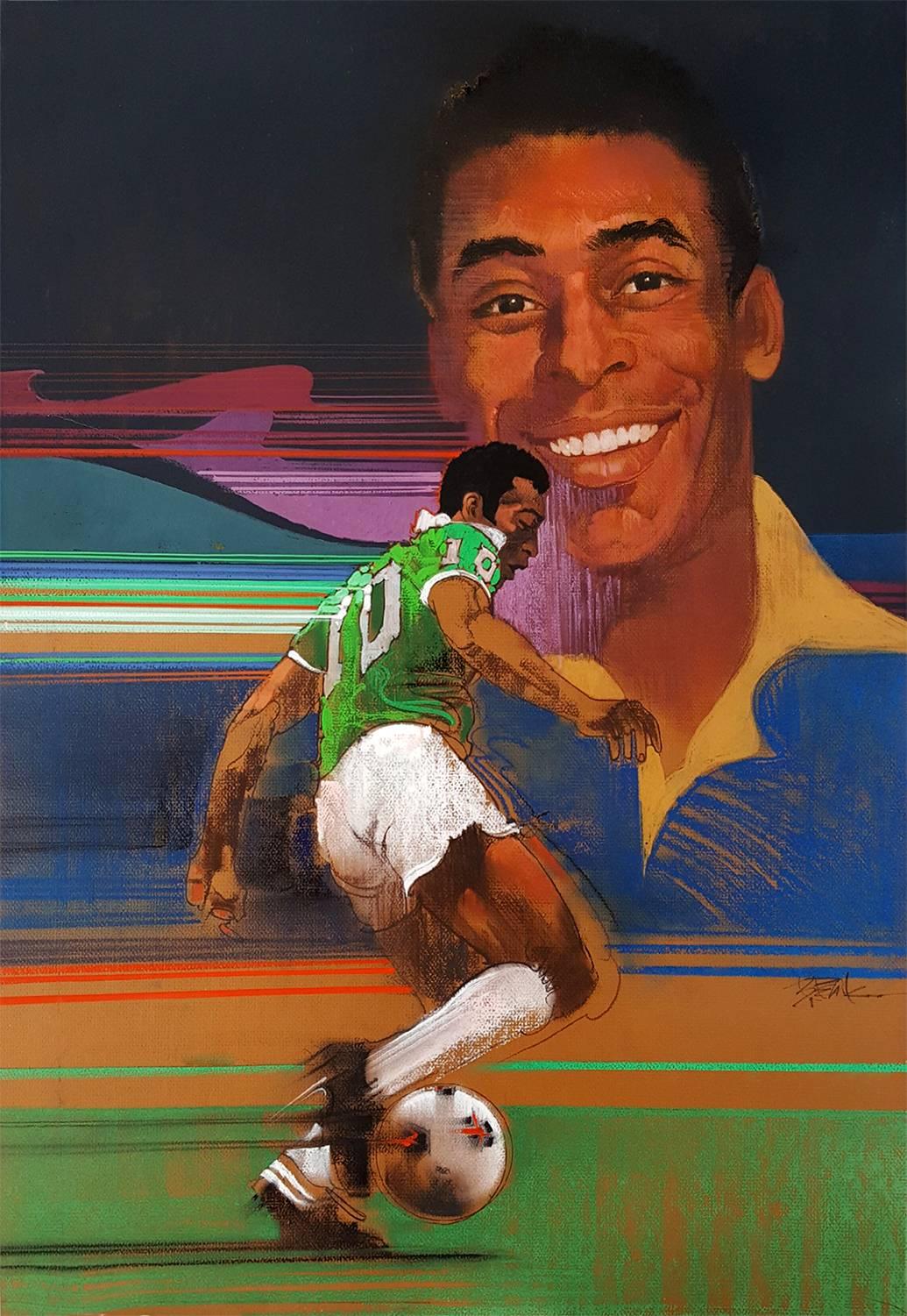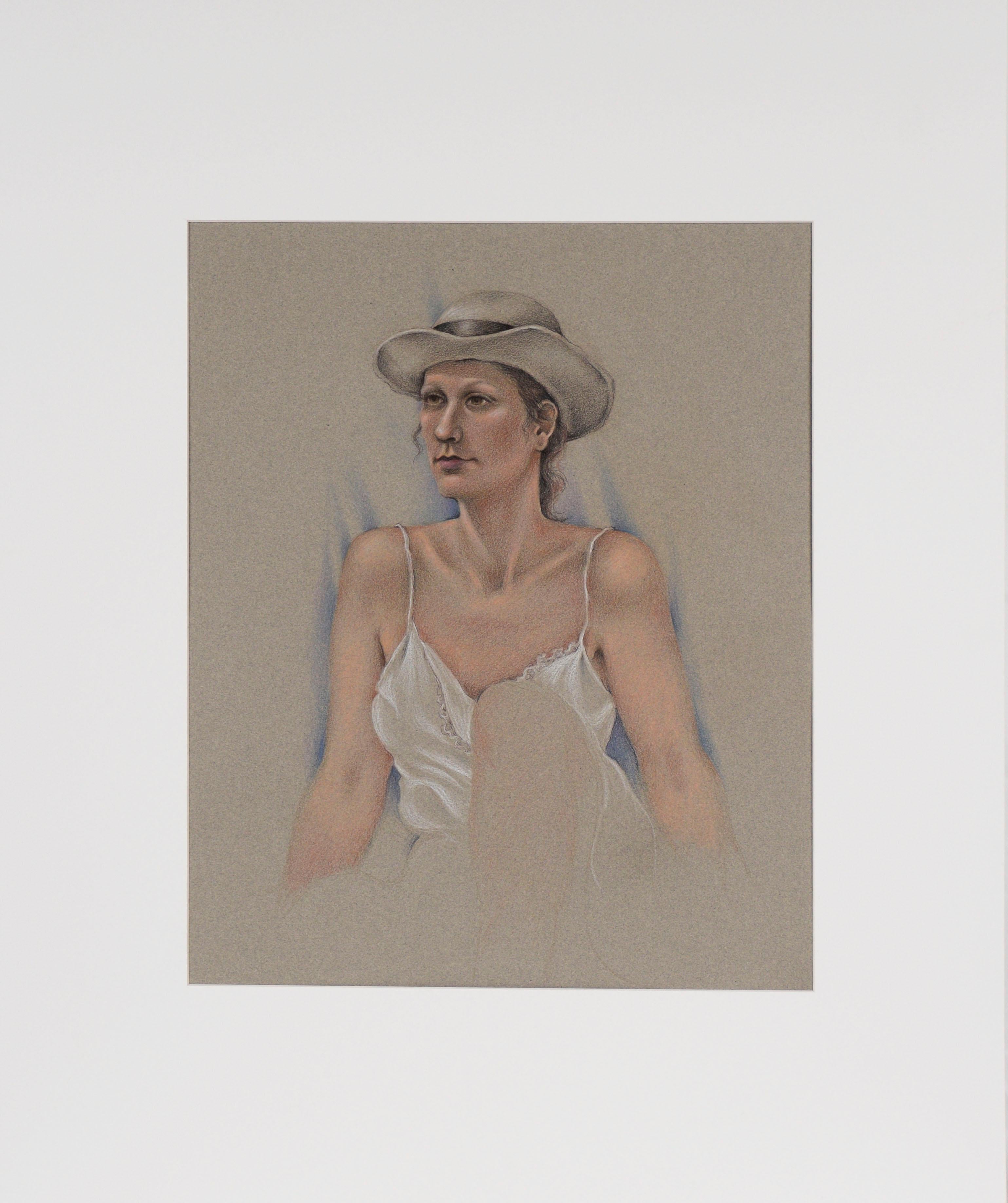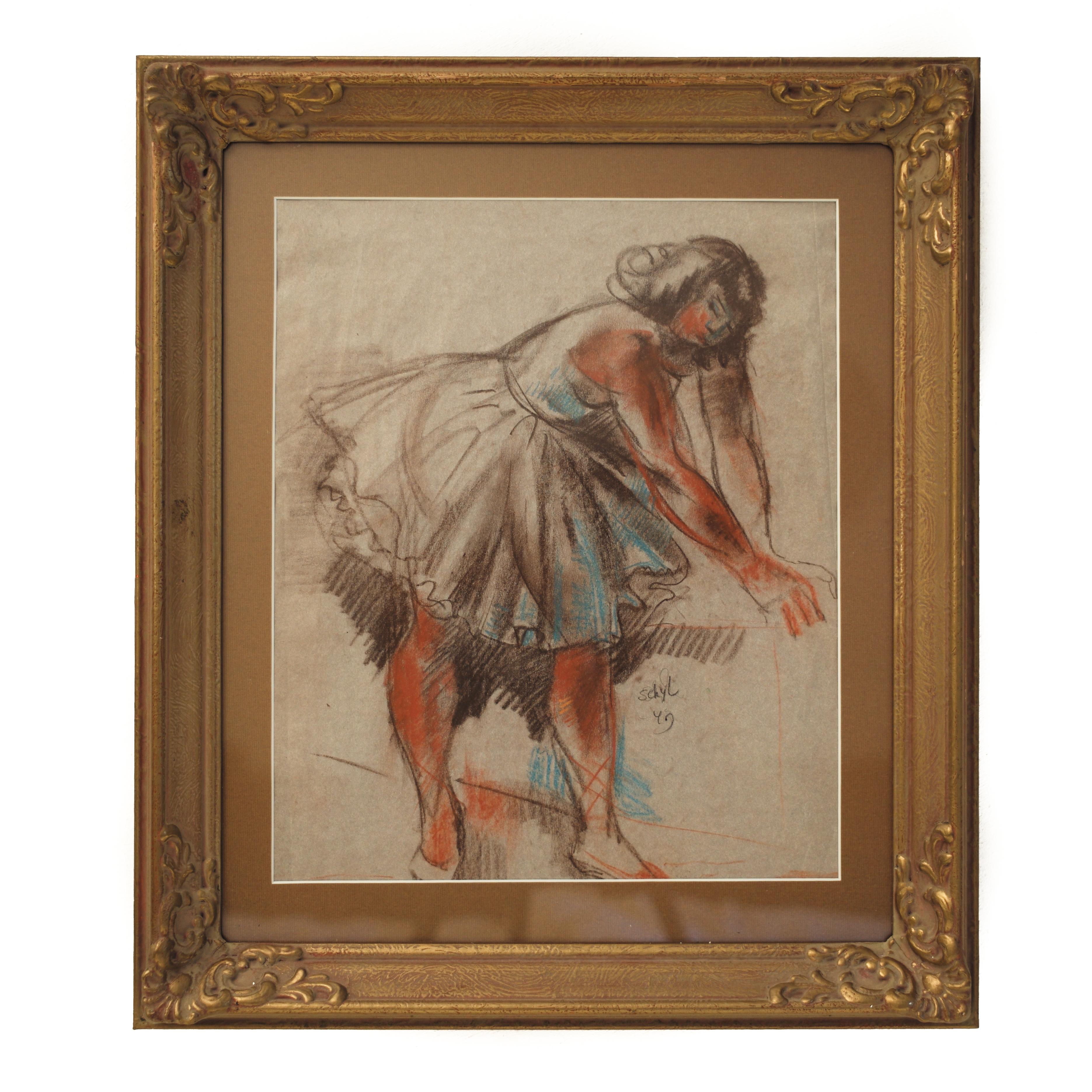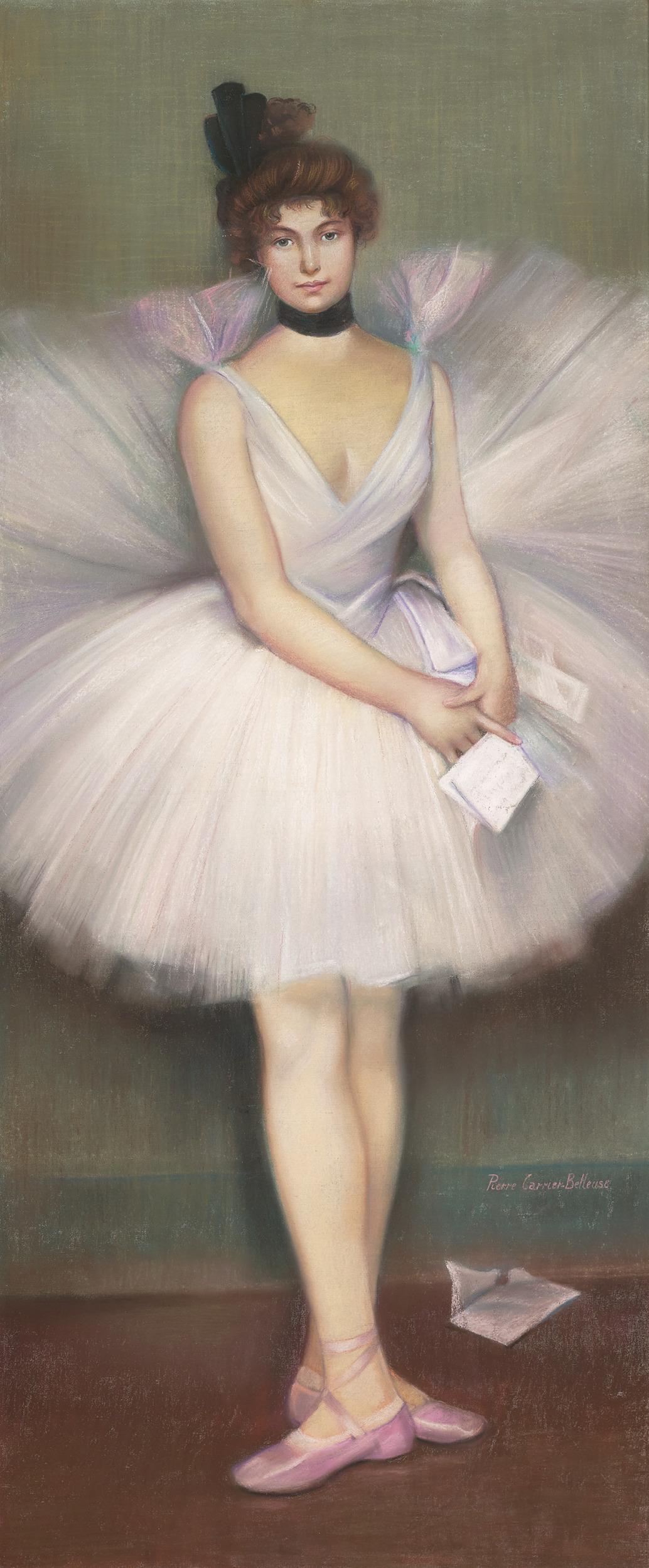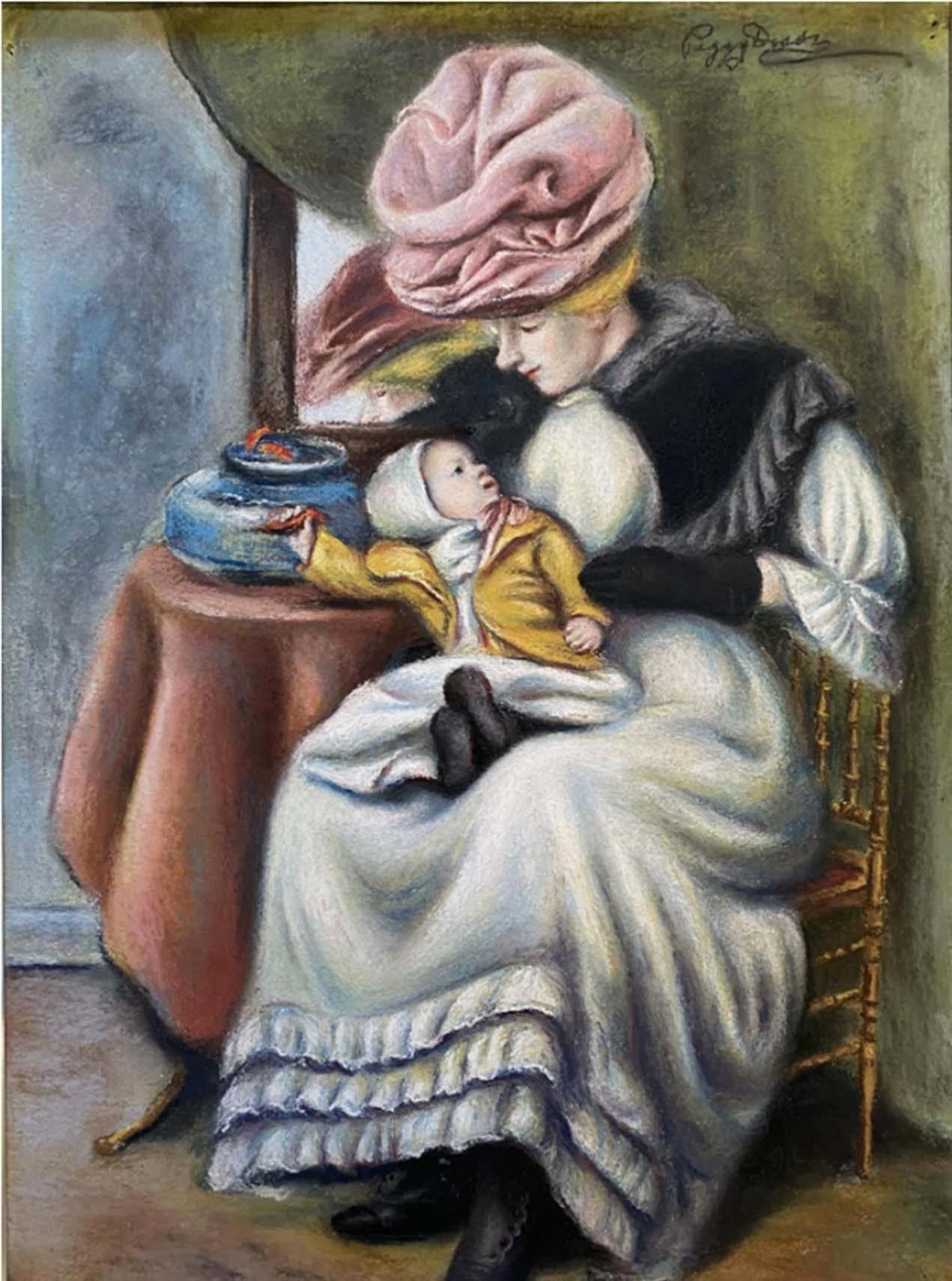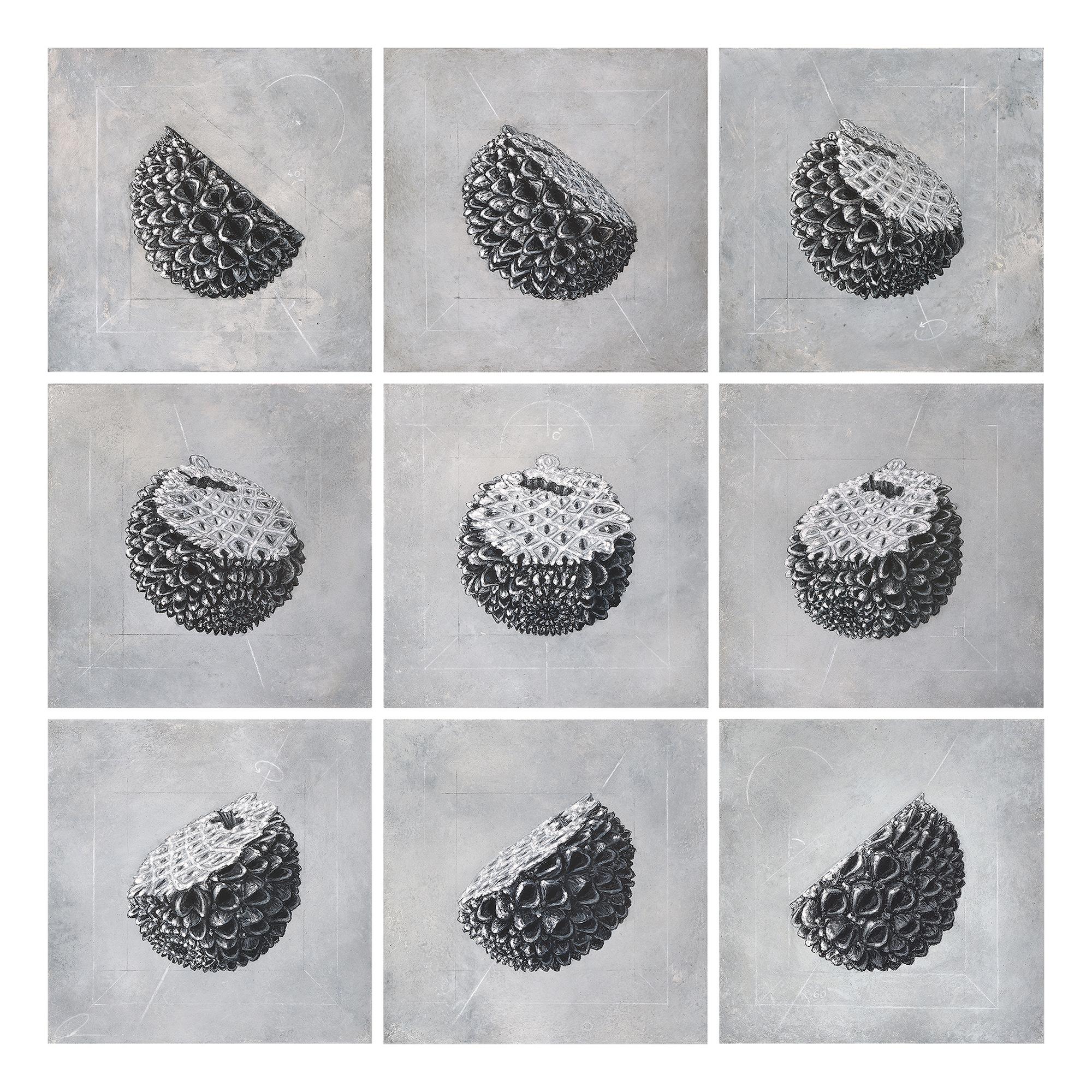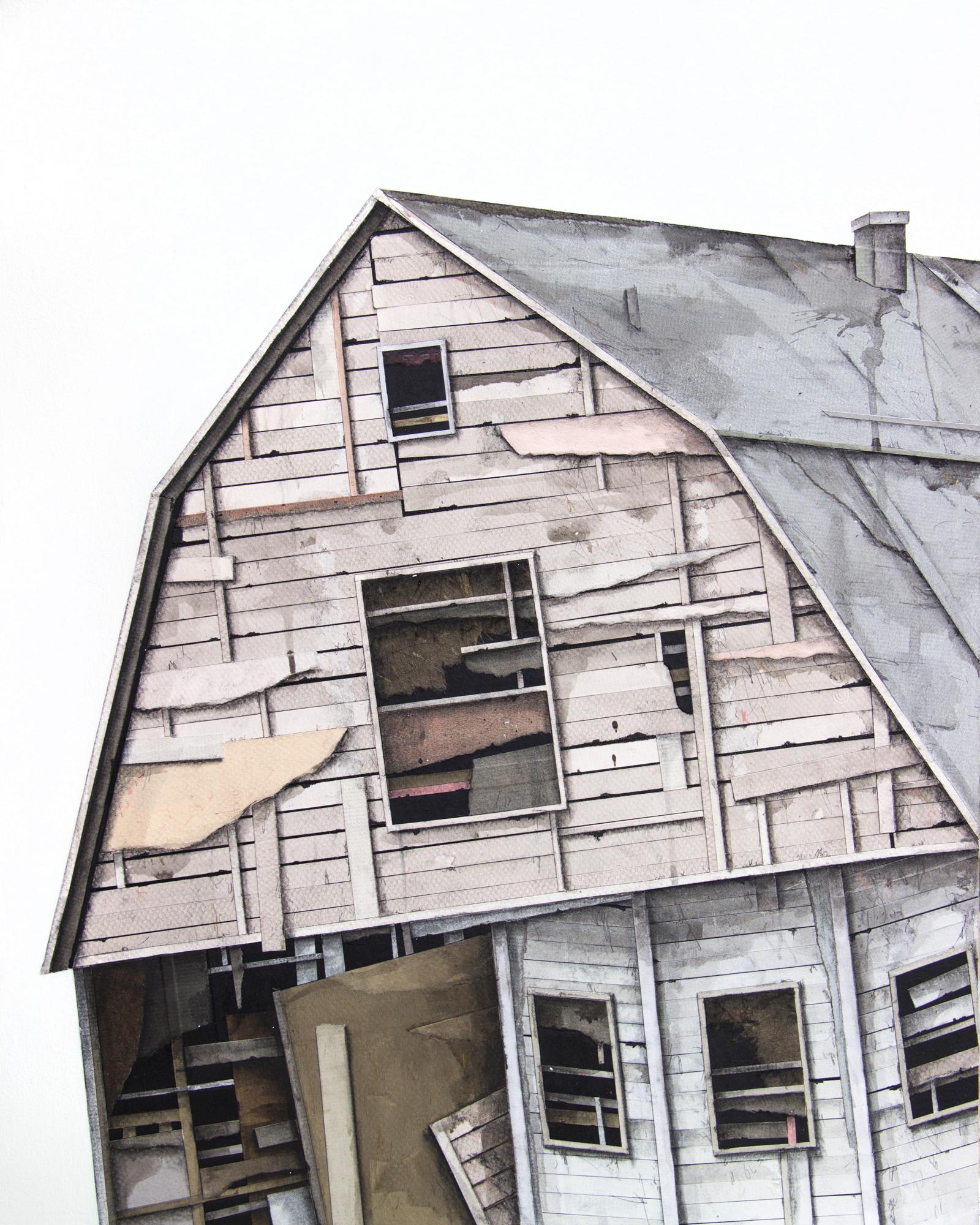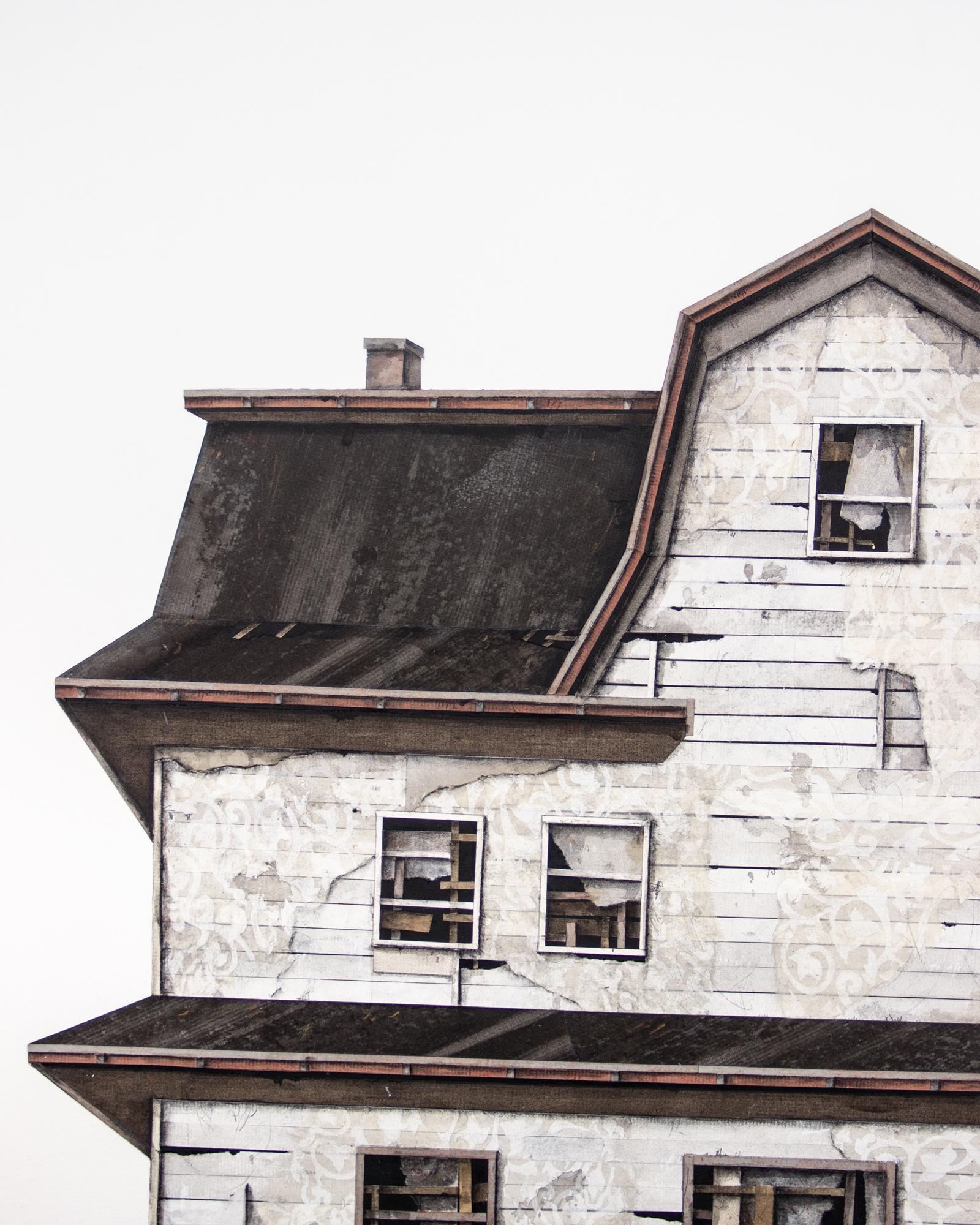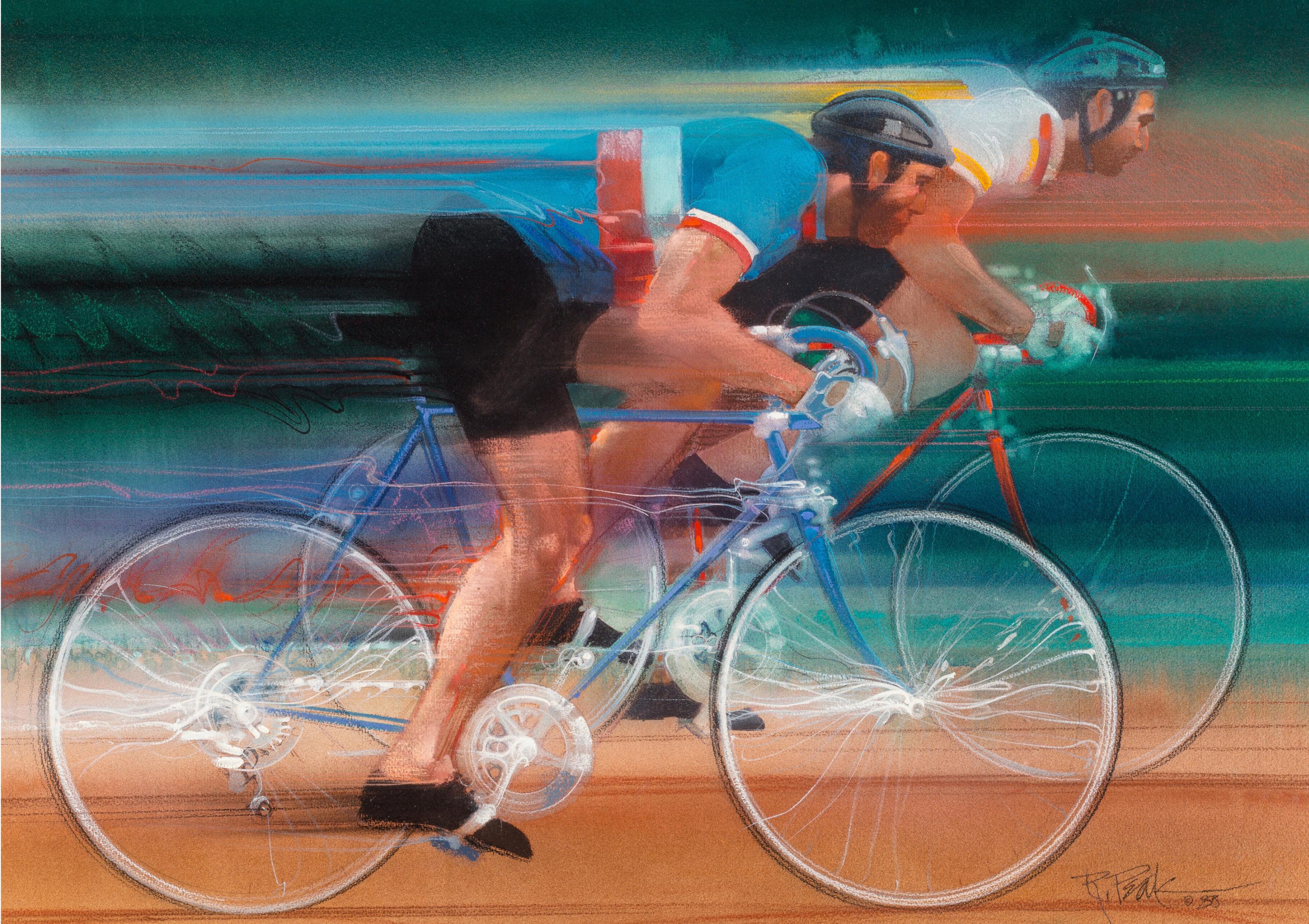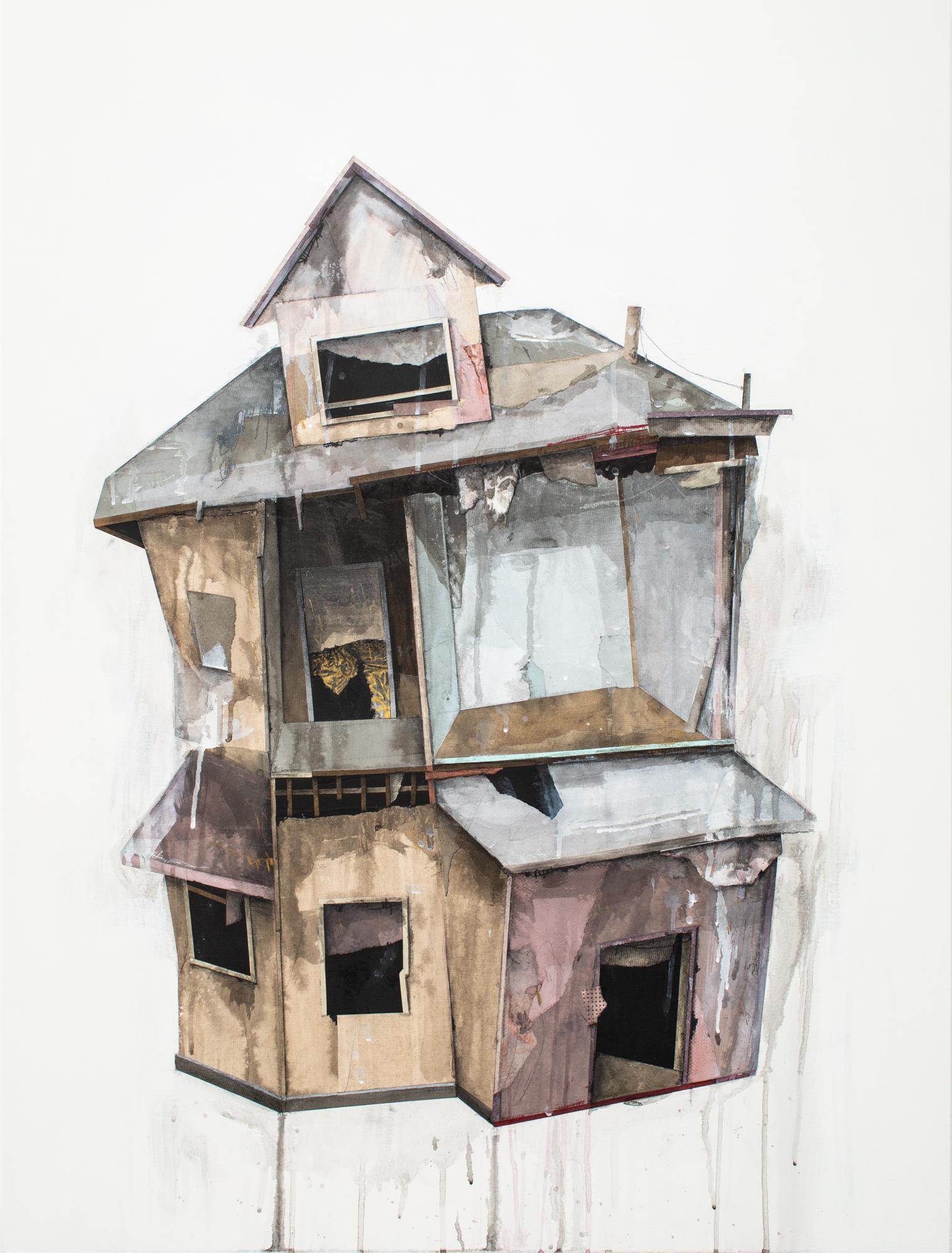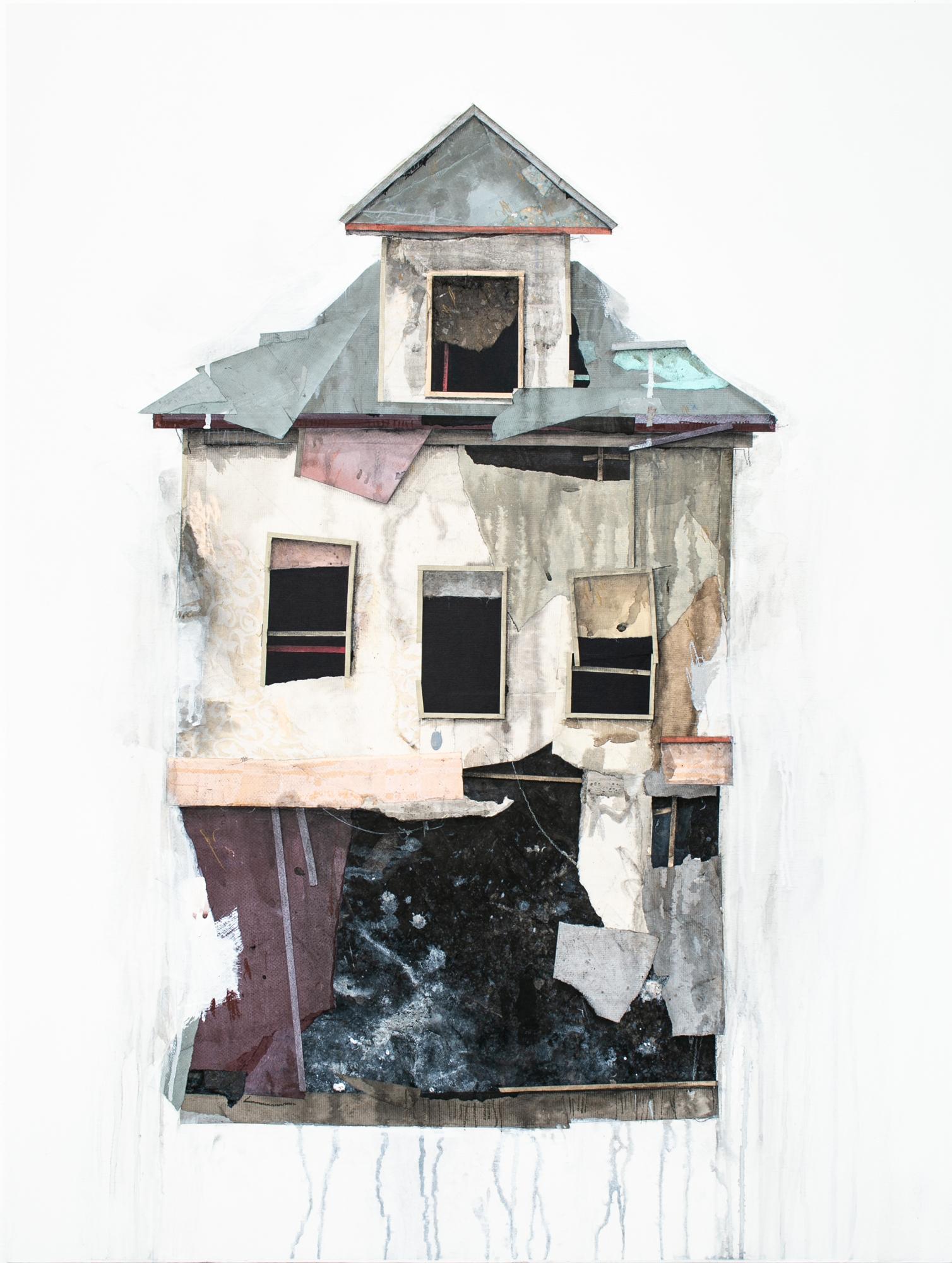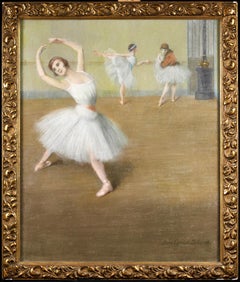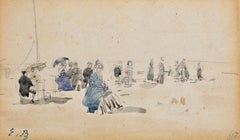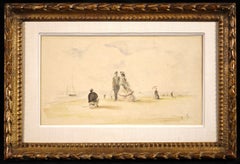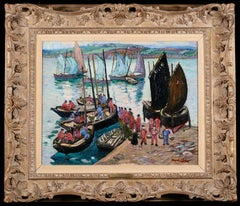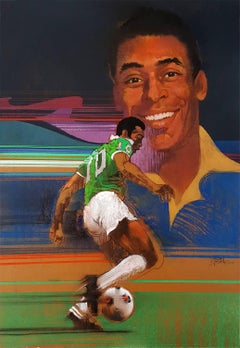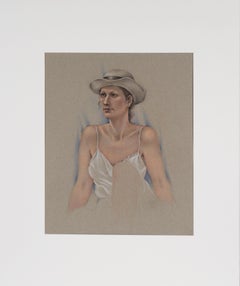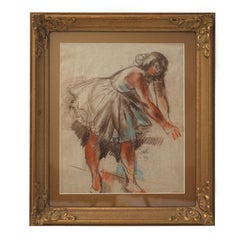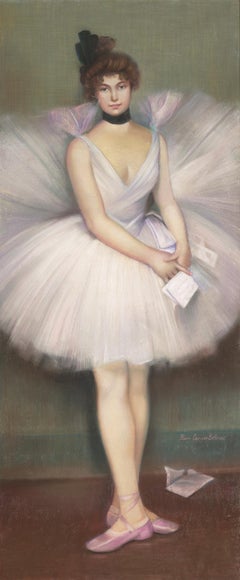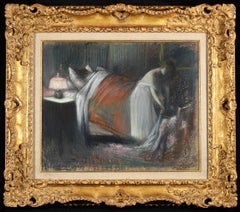
Le Lever - Impressionist Figures in Interior Pastel by Jean Louis Forain
View Similar Items
Want more images or videos?
Request additional images or videos from the seller
1 of 18
Jean Louis ForainLe Lever - Impressionist Figures in Interior Pastel by Jean Louis Forainc.1895
c.1895
Price:$9,804.18
$12,198.15List Price
About the Item
- Creator:Jean Louis Forain (1852-1931, French)
- Creation Year:c.1895
- Dimensions:Height: 22 in (55.88 cm)Width: 26 in (66.04 cm)
- Medium:
- Movement & Style:
- Period:
- Condition:Very good original condition.
- Gallery Location:Marlow, GB
- Reference Number:Seller: LFA04861stDibs: LU415312600132
About the Seller
5.0
Gold Seller
Premium sellers maintaining a 4.3+ rating and 24-hour response times
Established in 2001
1stDibs seller since 2016
708 sales on 1stDibs
Authenticity Guarantee
In the unlikely event there’s an issue with an item’s authenticity, contact us within 1 year for a full refund. DetailsMoney-Back Guarantee
If your item is not as described, is damaged in transit, or does not arrive, contact us within 7 days for a full refund. Details24-Hour Cancellation
You have a 24-hour grace period in which to reconsider your purchase, with no questions asked.Vetted Professional Sellers
Our world-class sellers must adhere to strict standards for service and quality, maintaining the integrity of our listings.Price-Match Guarantee
If you find that a seller listed the same item for a lower price elsewhere, we’ll match it.Trusted Global Delivery
Our best-in-class carrier network provides specialized shipping options worldwide, including custom delivery.More From This Seller
View AllDanseuses a la barre - Impressionist Figurative Pastel - Pierre Carrier-Belleuse
By Pierre Carrier-Belleuse
Located in Marlow, Buckinghamshire
Signed figurative pastel on canvas circa 1910 by French genre painter Pierre Carrier-Belleuse. The work depicts three ballerinas wearing white tutus, warming up in a studio. Carrier-Belleuse was a contemporary of Edgar Degas and they exhibited simultaneously at the major Salons in Paris. This classic example evokes the Belle Epoque period in french history and is superbly executed.
Signature:
Signed lower right
Dimensions:
Framed: 29"x24"
Unframed: 26"x21"
Provenance:
Private French collection
Pierre Carrier-Belleuse studied at the École des Beaux-Arts in Paris under Alexandre Cabanel and the interior decorative artist Pierre Victor Galland. He started out as an oil painter and produced genre compositions, such as his Final Rendezvous. From 1885, however, he opted to work exclusively in pastel, producing a large number of sketches and portraits but always remaining faithful to his earlier genre compositions. Examples include Pierrot, Harlequin, Woman with Cat. The periodical Figaro Illustré published a large number of his sketches of dancers, a recurrent theme throughout his work.
From 1875, Pierre Carrier-Belleuse exhibited frequently at the Paris Salon, receiving an honourable mention in 1887 and being awarded a silver medal at the Exposition Universelle of 1889.
Museum and Gallery Holdings:
Dunkirk: Dancer Adjusting her Shoe (pastel)
Gray: On the Dunes; In the Sun
La Rochelle: Dancer
Le Puy-en-Velay: Fantasy
Mulhouse: Mule's Bonnet
Paris (Municipal Collection): Tender Vow (pastel)
Versailles...
Category
1910s Impressionist Figurative Paintings
Materials
Canvas, Pastel
Crinolones sur la Plage - Impressionist Figurative Watercolor by Eugene Boudin
By Eugène Louis Boudin
Located in Marlow, Buckinghamshire
Signed and dated watercolour and pencil on paper by impressionist painter Eugene Boudin. The work depicts elegantly dressed people enjoying a day on the beach. Some women are resting...
Category
1860s Impressionist Figurative Drawings and Watercolors
Materials
Paper, Watercolor, Pencil
Sur la plage de Deauville - Impressionist Figurative Watercolor by Eugene Boudin
By Eugène Louis Boudin
Located in Marlow, Buckinghamshire
Signed watercolour on paper landscape circa 1865 by French impressionist painter Eugene Boudin. This work depicts an artist painting a portrait of an elegant couple on the beach at D...
Category
1860s Impressionist Figurative Drawings and Watercolors
Materials
Paper, Watercolor
Unloading the catch - Impressionist Figures Seascape Oil by Richard Hayley Lever
By Richard Hayley Lever
Located in Marlow, Buckinghamshire
Signed figures in landscape oil on board circa 1905 by Australian-American impressionist painter Richard Hayley Lever. The work depicts fishing vessels docked in the harbour in Douar...
Category
Early 1900s Impressionist Figurative Paintings
Materials
Oil, Board
Nocturne - Impressionist Figure in Landscape Oil Painting by Charles Lacoste
By Charles Lacoste
Located in Marlow, Buckinghamshire
Signed and dated figure in landscape oil on board by French impressionist painter Charles Lacoste. A truly stunning piece with depicts a nighttime view of a Parisian street with a single woman dressed in a black coat and hat standing in the centre of of dark square which is being dimly lit by the street lights overhead. The outline of trees and the city's buildings can be seen in the distance.
Signature:
Signed and dated 1904 lower right.
Dimensions:
Framed: 24.5"x31"
Unframed: 18.5"x25"
Provenance:
Wildenstein & Co - New York "Charles Lacoste: A Forgotten Nabi" 2002
This work is accompanied by the catalogue published to accompany the exhibition “Charles Lacoste: A Forgotten Nabi” held at Wildenstein in New York from January 30 to March 2, 2002
The son of a Bordeaux accountant and a creole mother, he met in high school the future poet Francis Jammes and Gabriel Frizeau the legendary art collector. He taught himself to paint and from 1894 to 1897 he made several important contacts: André Gide, Arthur Fontaine...
Category
Early 1900s Impressionist Landscape Paintings
Materials
Oil, Board
Soleil de Novembre - Impressionist Riverscape Oil by Alexandre Jacob
By Alexandre Louis Jacob
Located in Marlow, Buckinghamshire
Signed oil on board landscape circa 1950 by popular French impressionist painter Alexandre Louis Jacob. The piece depicts a view of a marsh water mill. The yellow glow of the low Nov...
Category
1950s Impressionist Landscape Paintings
Materials
Oil, Board
You May Also Like
Pelé Brazilian, footballer, Soccer Star, Illustration
By Bob Peak
Located in Miami, FL
Bob Peak is one of the true giants of post-war American Illustration. He is a virtuoso artist, with a heightened level of skill and talent that very few living artists today possess...
Category
1980s American Impressionist Figurative Paintings
Materials
Pastel, Gouache
Portrait of a Woman in a White Dress - Pastel on Paper
By Marilyn Thompson
Located in Soquel, CA
Portrait of a Woman in a White Dress - Pastel on Paper
Delicate drawing of a woman in a white dress by Palo Alto artist Marilyn Thompson (American, 1927-2015). Acquired with a colle...
Category
1990s Impressionist Figurative Paintings
Materials
Paper, Pastel
Ballet Dancer by Jules Schyl, Pastel on paper, Similarities with Degas
By Jules Schyl
Located in Stockholm, SE
Jules Schyl (Sweden, 1893-1977)
Title: Ballet Dancers
A Ballet Dancer painting is a rare find for an artist mostly known for his oeuvre with Cubism and Expressionist paintings. The current painting has many similarities with Degas sketches...
Category
1940s Impressionist Figurative Drawings and Watercolors
Materials
Paper, Crayon, Pastel
$1,342 Sale Price
54% Off
Danseuse By Pierre Carrier-Belleuse
By Pierre Carrier-Belleuse
Located in New Orleans, LA
Pierre Carrier-Belleuse
1851-1932 French
Danseuse
Signed “Pierre Carrier-Belleuse” (lower right)
Pastel on canvas
Strikingly elegant, this extraordinary pastel by French impressi...
Category
19th Century Impressionist Figurative Drawings and Watercolors
Materials
Canvas, Pastel
Mother and Child with Goldfish
By Peggy Dodds
Located in Los Angeles, CA
A whimsical pastel featuring a Mother with her Child on her lap that just pulled a goldfish from it's bowl.
A charming large work that is exquisitely framed.
Peggy Dodds Williams
...
Category
1930s Impressionist Figurative Paintings
Materials
Pastel, Archival Paper
$2,450 Sale Price
30% Off
Phases by Oliver Ashworth-Martin - Pastel drawing, nature, plant, investigation
Located in Paris, FR
Phases is a unique pastel, archival board drawing by contemporary English sculptor Oliver Ashworth-Martin, dimensions including oak frame are 75 × 75 cm (29.5 × 29.5 in).
This drawin...
Category
2010s Figurative Paintings
Materials
Pastel, Board
Recently Viewed
View AllMore Ways To Browse
Antique Pastel Painting
19th Century Pastel Painting
Pastel 1900
St Louis Impressionist Paintings St Louis
German Portrait Painting 1920
19th Century Pastel Portrait
C Milder
German Pastel Portrait
Louis Claude Artist
Le Fanion
Impressionist Paintings Of Swimming
Antique George Washington Painting
1895 Fashion
Degas Pastels
Degas Etching
Claude Monet Etching
Swimming Woman Painting
Vogue Poster
